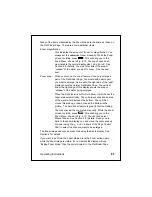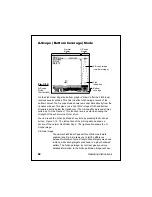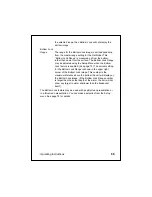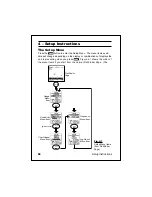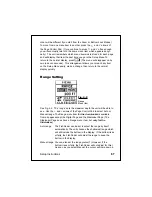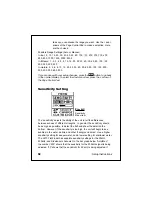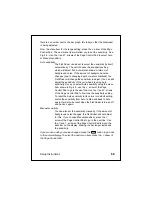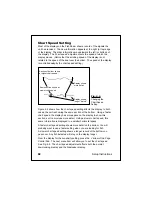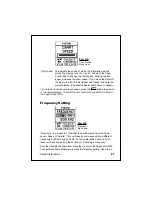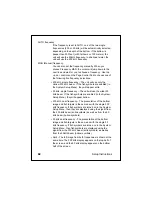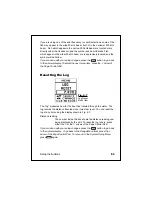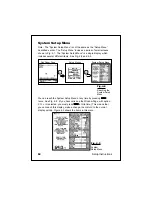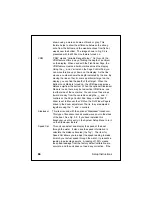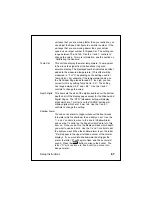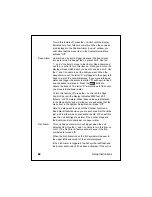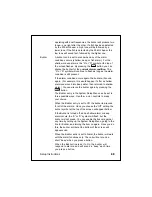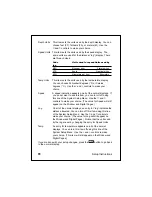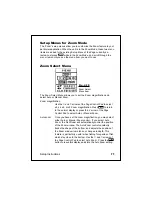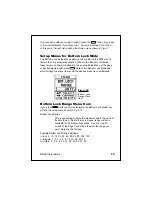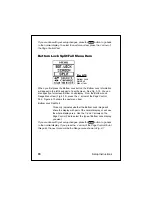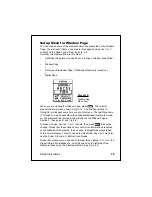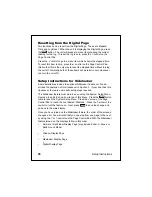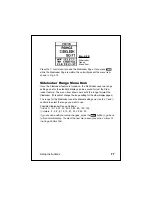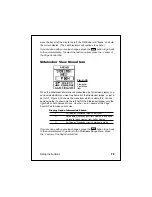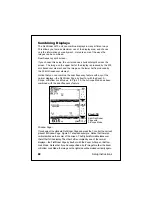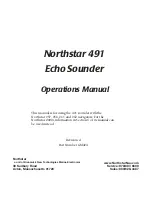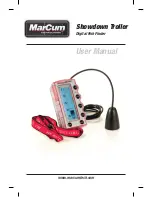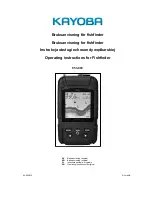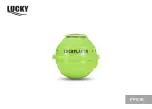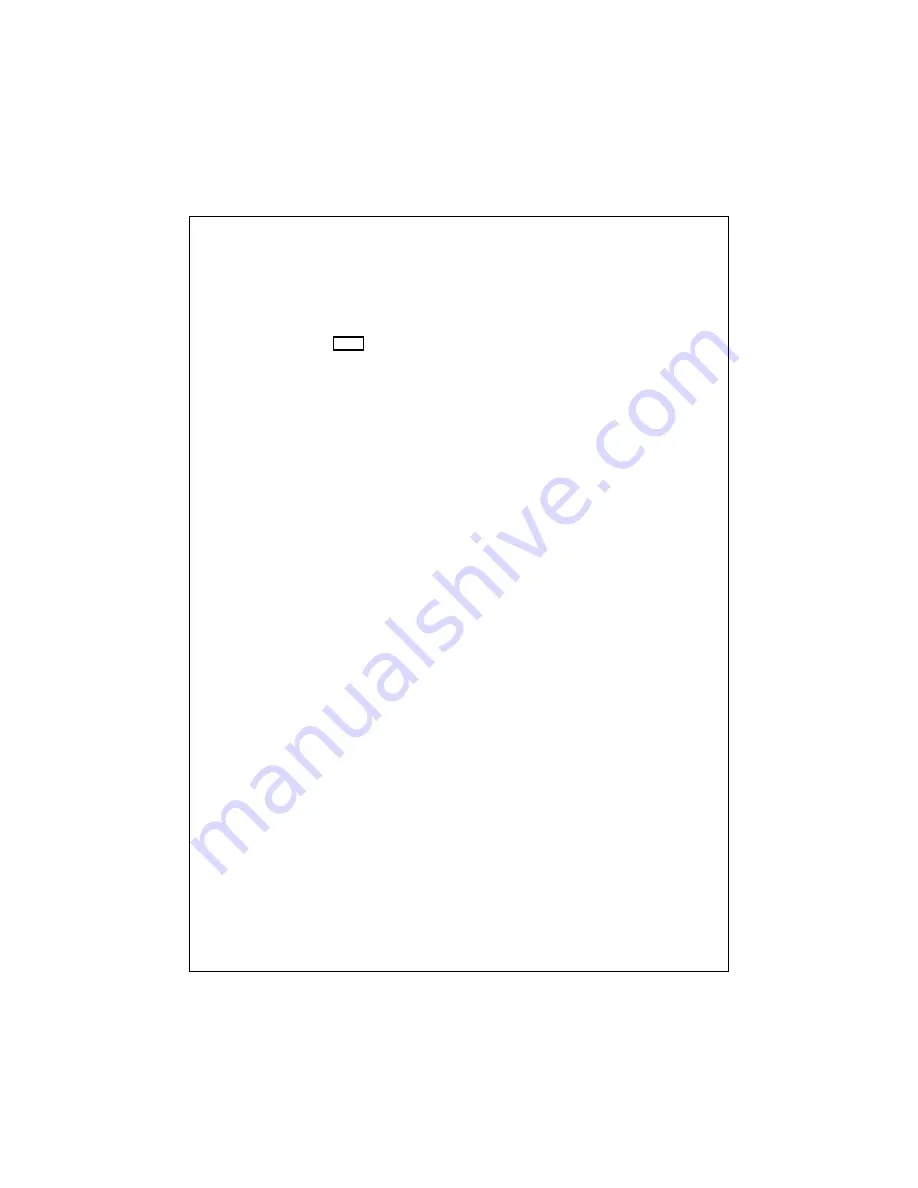
65
Setup Instructions
To change one of the items, use the
<
and
V
arrows of the Page Control
Pad to move up or down in the display. This will highlight an area on the
display where the unit is ready to make a change. (This is like the “cursor”
on a computer.) Once you have moved to the correct line, press the
<
or
>
arrows of the Page Control Pad to change the entry. Make your change,
then press the
CLEAR
button to leave the display. The unit will store any
changes you have made.
Simulator
This unit has a built-in simulator. When the simulator is
enabled, it presents a realistic display. You can use this
display to learn about the features of the unit without
operating your boat. The information on this display is
generated by the unit itself, and does not come from a
transducer. When this mode is turned on, you will see the
word “Simulation” flashing on the display.
Language
The
unit
can
present
the
display
information
in
one
of
seven
different languages. English is the default language which
is selected at the factory. You may specify a different
language at any time using this menu item. As you scroll
through the languages in the menu, the wording on the
menu will change to that language as well. The language
choices are: English, Spanish, French, German, Italian,
Swedish and Norwegian.
Fish Symbols When the Fish Symbols are turned off, fish are displayed as
arches. (This represents the way the beam from the trans-
ducer is returned from a fish.) When the Fish Symbols are
turned on, detected fish are shown as symbols. A number
above the symbol shows the depth of the fish. The unit
produces eight different sizes of symbols. The size which
appears depends on the strength of the return from the fish.
(For more information, see the section on “Fish Indications.”)
White Line
This feature controls the way the unit displays strong and
weak echoes. When the White Line feature is turned off, all
of the echoes are displayed in black. When the feature is
turned on, the upper layer of the bottom structure is shown
as a black line. Strong echoes are displayed using a
crosshatch (or “checkerboard”) pattern. A weaker return is

